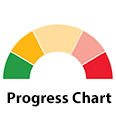Decent work and economic growth

Workers operate a production line in an electronics factory in Viet Nam.
© ILOGlobal GDP growth has waned, and productivity is stagnant, posing risks to economic development
Global real GDP per capita grew at an average annual rate of 2.1 per cent from 2010 to 2014, slowing to 1.6 per cent from 2015 to 2022. The decline stemmed from slower growth in most regions and decreases in sub-Saharan Africa, Latin America and the Caribbean, and Oceania (excluding Australia and New Zealand). Global real GDP per capita inched up 1.8 per cent annually from 2015 to 2019 but fell by 3.9 per cent in 2020 before recovering with a 5.3 per cent increase in 2021. Growth slowed to 2.2 per cent in 2022 and is estimated to further drop to 1.0 per cent in 2023. The projected growth rate will be 1.8 per cent in 2024 and 1.5 per cent in 2025.
Annual growth in real GDP in the LDCs retreated from 5.1 per cent in 2019 to just 0.7 percent in 2020 before partially recovering to 3.8 per cent in 2021. Growth strengthened to 4.6 per cent in 2022 and is predicted to rise by 4.4 per cent in 2023, 5.5 per cent in 2024 and 4.9 per cent in 2025, still well below the 7 per cent target.
Annual growth in economic productivity, defined as the growth rate of real GDP per employed person, stagnated in 2022 and 2023 below 0.5 per cent, a stark contrast to the period from 2015 to 2019, when the average growth rate exceeded 1.5 per cent. The pandemic interrupted this trend, with 2020 registering a 1.1 per cent decline as output fell faster than employment, although this was fully offset by a short-lived rebound in 2021. The slow pace of productivity growth in the last two years poses a risk to economic growth and development.
Average annual growth of real GDP per capita, 2010-2014 and 2015-2022 (percentage)

*Excluding Australia and New Zealand.
The global youth NEET rate dipped after the pandemic but stark gender disparities persist
In 2023, the global NEET rate among young people was 21.7 per cent, a notable decrease from 23.8 per cent in 2020. It closely matched the 2015 baseline of 21.8 per cent and is expected to persist through 2025. Northern Africa and Western Asia and Central and Southern Asia reported higher rates of 28.5 per cent and 27.4 per cent, respectively. Central and Southern Asia saw significant improvement, reducing its rate by 7.5 percentage points since 2005. Sub-Saharan Africa experienced an increase. Globally, young women are over twice as likely as young men to be NEET. In Central and Southern Asia, nearly half of young women are NEET compared to only 12.3 per cent of young men. Northern Africa and Western Asia echo this disparity. With about 269 million young people globally not in education or work in 2023, intensified efforts are needed to reduce NEET rates, particularly among young women.
Fewer countries had an operationalized national strategy for youth employment in 2023 compared to previous years. Only 36 of 87 reporting countries had implemented such a strategy. Around one third had a strategy but without evidence of implementation. One fifth were developing one.
Global unemployment fell to a record low, yet gaps remain for women and youth
In 2023, the global unemployment rate fell to a record low of 5.0 per cent since 2000. The rate is projected to further drop to 4.9 per cent in 2024 and to stay the same level in 2025. Eastern and South-Eastern Asia, the LDCs and LLDCs saw unemployment rates rise from 2019 to 2023. Northern Africa and Western Asia had the highest rate at 9.5 per cent, despite declines since the pandemic. Women and youth continued to face higher rates globally and across regions. In 2023, gender unemployment gaps were similar to those in 2015, with the largest disparities in Northern Africa and Western Asia. Central and Southern Asia have made strides in narrowing the gap due to improved labour market access for women, particularly in Southern Asia. Youth unemployment was over three times higher than adult rates globally, at 13.0 per cent compared to 3.7 per cent, respectively. While headline unemployment figures improved, persistent challenges such as working poverty and informal employment highlight ongoing struggles in realizing decent work.
Unemployment rate by sex, 2023 (percentage)

*Excluding Australia and New Zealand.
Substantial declines in labour rights plague all regions, worsening prospects for social justice
From 2015 to 2022, the global average level of national compliance with labour rights declined by 7 per cent, with the average score worsening from 4.50 to 4.81. This indicator, ranging from 0 to 10, signifies national compliance with freedom of association and collective bargaining rights, with 0 indicating the highest compliance and 10 the lowest. The deterioration has affected developed, developing and least developed countries, with decreases of 0.2, 0.3 and 0.8 points, respectively, since 2020. Scores have worsened for 33 per cent of ILO member States since 2020; only 11 per cent have improved their scores, partly due to legislative reforms. Regional averages reflect substantial declines in Eastern and South-Eastern Asia, Central and Southern Asia, Europe and Northern America and Latin America. Northern Africa and Western Asia saw marginal improvements. Increased violations and restrictions on civil liberties, especially in union formation and bargaining rights, drive the trend. Freedom of association and collective bargaining are enabling rights to exercise fundamental rights at work, with a crucial role in social justice.
Level of national compliance with labour rights (freedom of association and collective bargaining) based on ILO textual sources and national legislation, 2015 and 2022 (scale 0-10)

More than 2 billion workers globally were in informal employment in 2023
Globally, over 2 billion people were in informal employment in 2023, comprising 58.0 per cent of the global workforce, a share projected to slightly decrease to 57.8 per cent in 2024. This rate is down from 58.4 per cent in 2015, reaching its lowest point, but the number of informal workers is at its highest level. This suggests that widespread formalization is unlikely soon. Economic challenges are pushing workers into informal jobs without social protection, a significant barrier to social justice. Informal employment persisted most notably in the LDCs at 89.1 per cent in 2023, a rate nearly unchanged since 2015. The rate in Europe and Northern America was only 11.4 per cent. Women, particularly in the LDCs and regions with high informality rates, experienced a disproportionate increase in informal employment during the pandemic. Over 90 per cent of employed women in the LDCs and nearly 90 per cent in sub-Saharan Africa and Central and Southern Asia performed informal work.
A crucial sector of many economies, tourism is mostly on the rebound post-pandemic
The COVID-19 pandemic inflicted unprecedented damage on tourism. Its contribution to the global economy plummeted from 3.8 per cent of GDP in 2019 to 1.8 per cent in 2020. In 2022, the sector rebounded to 82 per cent of its 2019 level, contributing to 3.1 per cent of global GDP, as it tapped pent-up demand following the end of travel restrictions and resumption of air connections. While most regions are nearing 2019 levels, challenges persist for Oceania (excluding Australia and New Zealand) and the small island developing States, with the economic performance of tourism at 68 per cent and 43 per cent of pre-pandemic levels, respectively. Tourism remains crucial for jobs, local ecosystems, peacebuilding and poverty reduction through income generation and tax revenues. Challenges such as inflation, climate change, geopolitical conflicts and uneven economic recovery threaten the sustainable development of the sector, particularly in small island developing States, which rely heavily on tourism.

